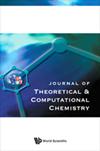水稻淀粉支链淀粉降解机理的ONIOM量子计算[DFT/B3LYP/6-31+G(D, P): AM1]
IF 2.4
Q3 Computer Science
引用次数: 0
摘要
了解水稻老化过程中降解的分子因素是我们研究小组关注的问题。这篇文章重点介绍了米泽宁-支链淀粉。旨在揭示水稻老化过程中支链淀粉变质的机理。本研究利用理论水平DFT/B3LYP/6-31+G(d, p)和AM1的自然键分析和ONION方法。这种方法方法允许突出支链淀粉转化;稻谷蛋白连续地将支链淀粉转化为淀粉样变性。这就产生了单糖和双糖。本文章由计算机程序翻译,如有差异,请以英文原文为准。
Mechanism of Degradation of Rice Starch Amylopectin by Oryzenin Using ONIOM Quantum Calculations [DFT/B3LYP/6-31+G(D, P): AM1]
Understanding the molecular factors of rice degradation during its aging concerns our research team. This article emphasizes oryzenin-amylopectin. It aims to reveal the mechanism of amylopectin deterioration during rice aging. The research exploits the Natural Bond Analysis and ONION method at theory level DFT/B3LYP/6-31+G(d, p) and AM1. This methodological approach allows highlighting amylopectin transformation; oryzenin converts amylopectin into amyloidosis in continuous. This led to monosaccharides and disaccharides.
求助全文
通过发布文献求助,成功后即可免费获取论文全文。
去求助
来源期刊
CiteScore
1.70
自引率
0.00%
发文量
0
审稿时长
3 months
期刊介绍:
The Journal of Theoretical and Computational Chemistry (JTCC) is an international interdisciplinary journal aimed at providing comprehensive coverage on the latest developments and applications of research in the ever-expanding field of theoretical and computational chemistry.
JTCC publishes regular articles and reviews on new methodology, software, web server and database developments. The applications of existing theoretical and computational methods which produce significant new insights into important problems are also welcomed. Papers reporting joint computational and experimental investigations are encouraged. The journal will not consider manuscripts reporting straightforward calculations of the properties of molecules with existing software packages without addressing a significant scientific problem.
Areas covered by the journal include molecular dynamics, computer-aided molecular design, modeling effects of mutation on stability and dynamics of macromolecules, quantum mechanics, statistical mechanics and other related topics.

 求助内容:
求助内容: 应助结果提醒方式:
应助结果提醒方式:


